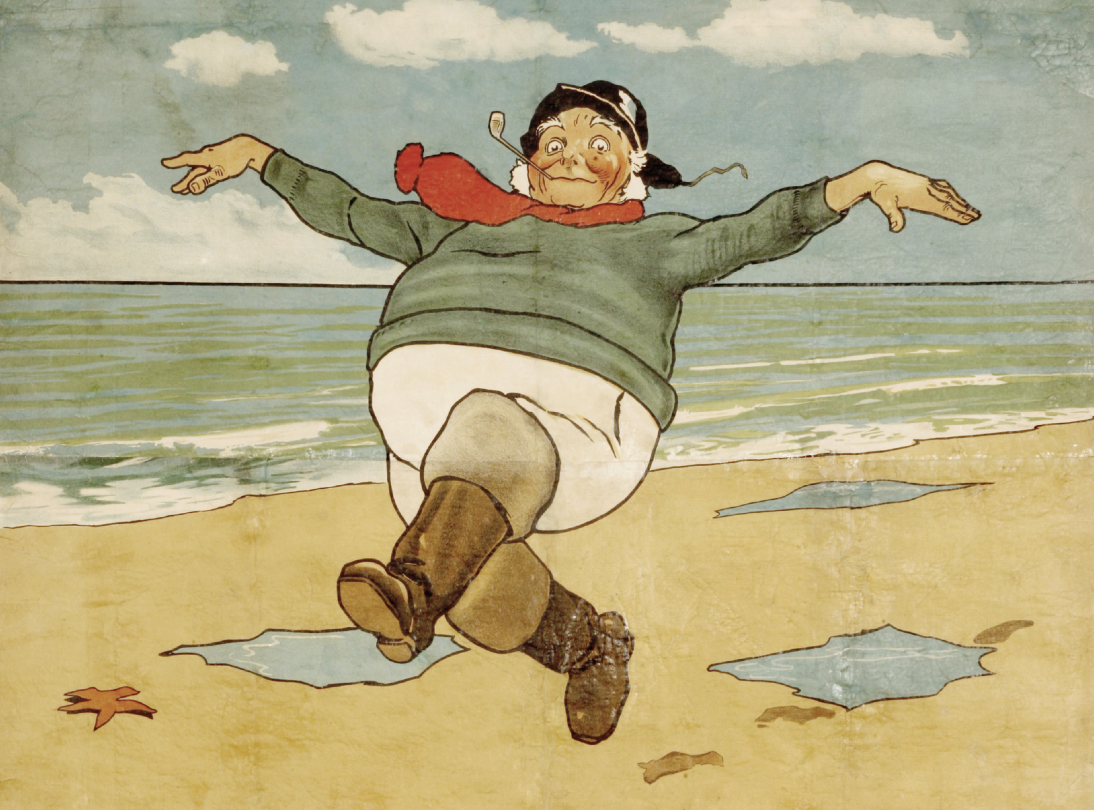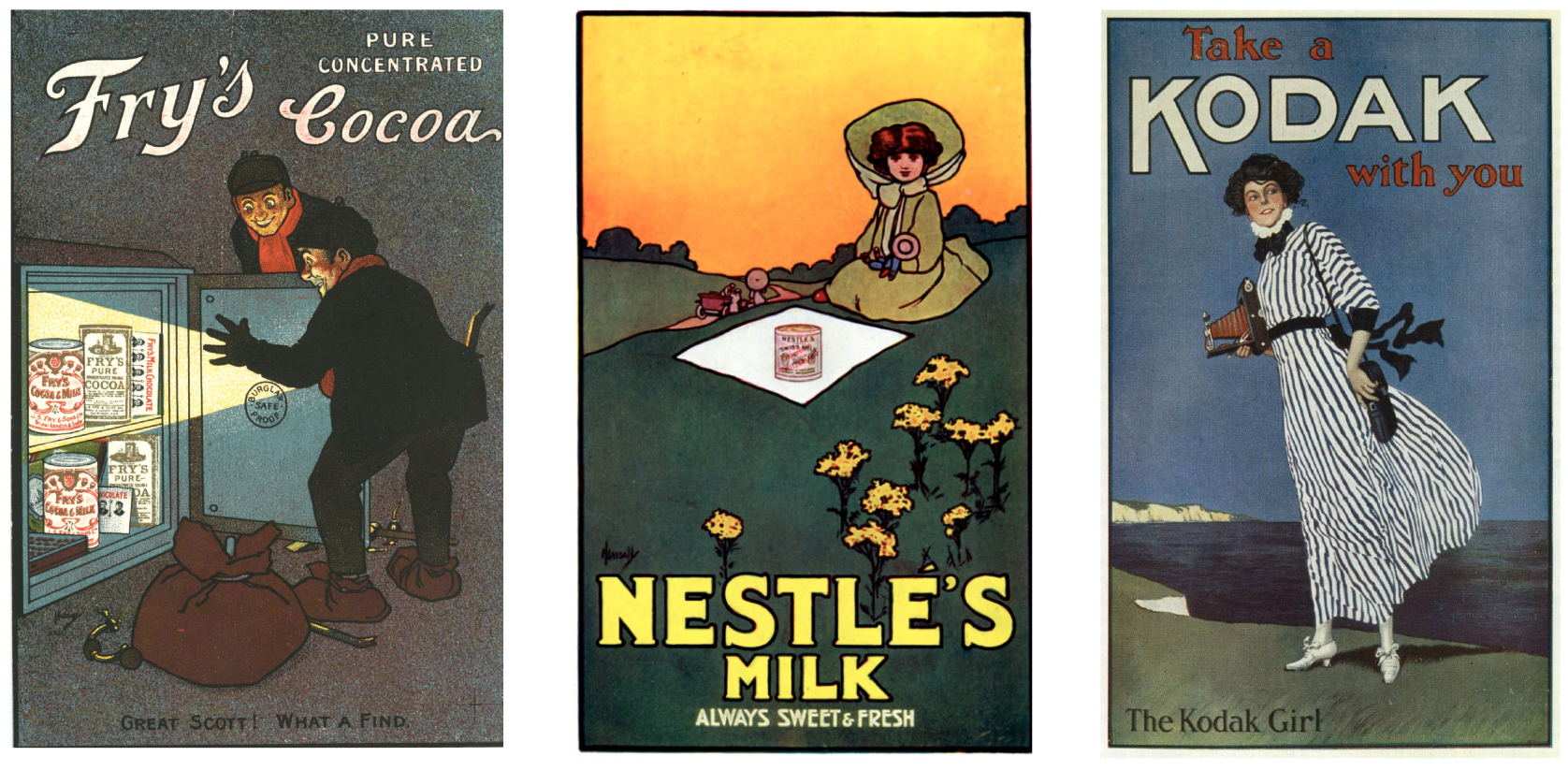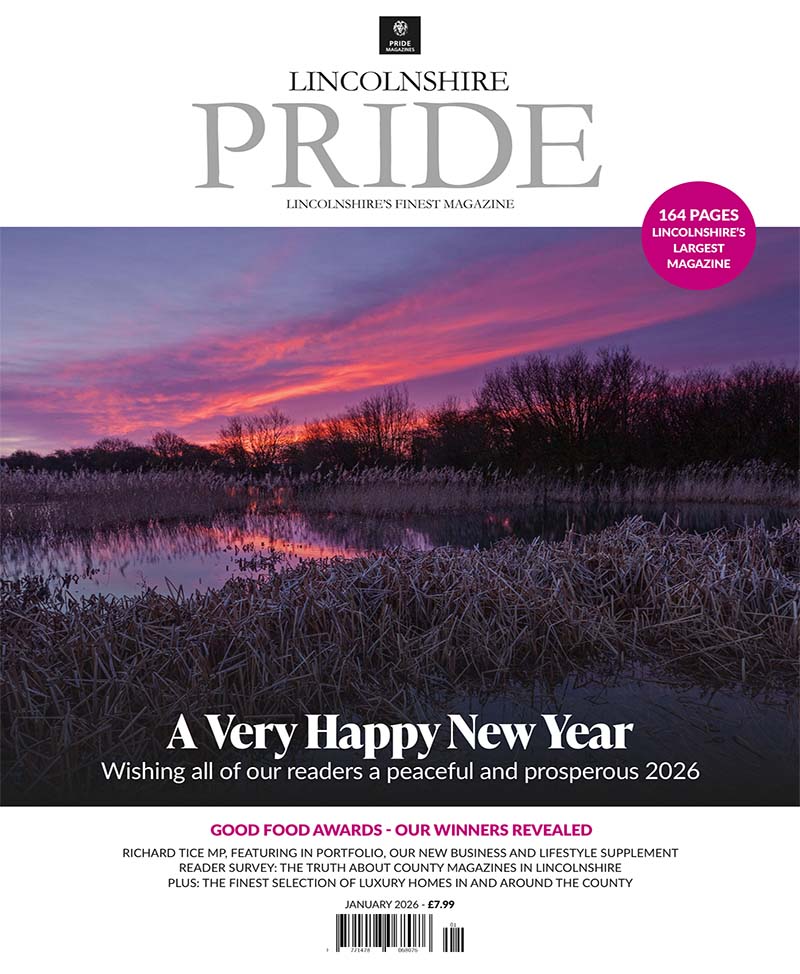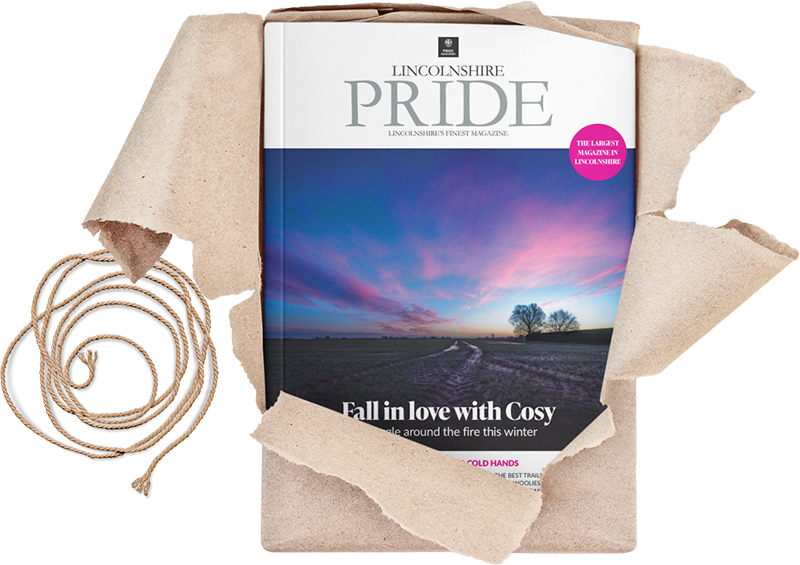
John Hassall’s Jolly Icon
We all know that Skegness is so bracing, and that the most bracing figure of all in the town is the Jolly Fisherman himself… you may also know that the artist behind the iconic image is John Hassall. But even in the town, surprisingly little is known about the figure. That’s why we’ve spoken to academic, author and historian Luci Gosling, who quite literally wrote the book on good old Jolly…

It’s The Bracing East Coast seaside town that hibernates by winter and then springs into life from Easter to remain a Jolly holiday resort throughout spring and summer. Skegness is usually home to about 25,000 people but its population increases tenfold during the tourist season, and the place has been especially popular since the railway arrived in the town back in 1873.
Arguably one of the reasons that Skegness achieved such popularity is a good advertising campaign by the Great Northern Railway. In 1908 the railway used a new figure in its advertising, complete with the catchphrase ‘Skegness is so bracing’ and the architect of this incredibly successful marketing was John Hassall.
Thomas Lumley the 3rd Early of Scarborough was responsible for investing heavily in the town from the mid-1700s and by the end of the 18th century, the gentry were keen to visit the town and avail themselves of what was considered to be a healthy lifestyle of salt water bathing and fresh coastal air.
The seaside was considered the preserve of a posh family but aspiring middle classes soon caught on to the fashionable act of taking the sea air and soon a stagecoach terminus, bathing machines (what we’d know as a beach hut) and lodging houses began to spring up.
By the time the railway arrived, Skegness was attracting about 20,000 visitors a year, and the late 19th century again saw a flurry of investment, this time from the 9th Earl of Scarborough, Richard Lumley, who funded a grid-aligned settlement comprising 787 homes across 96 acres.
The Earl funded new roads, a sewerage system, the sea wall, gas and waterworks, plus landmarks like the pier and pleasure gardens (1881) and bathing pools (1883), hoping to capitalise on the popularity of tourism and counter the losses the area was making amid Skegness’s agricultural decline.
By the 1890s, Skegness and similar resorts were able to accommodate the working classes, with cheap amusements, street traders and other forms of entertainment.
Hence an advertising campaign was launched by the railway to appeal to this new market, and there really was only one man for the job.
Surprisingly little is known about John Hassall in Lincolnshire, but Luci Gosling is undoubtedly the expert, having written Holidays & High Society: The Golden Age of Travel and John Hassall: The Life and Art of the Poster King.
Luci is from County Durham but spend much of her professional life in London working for pictorial archives such as the Mary Evans Picture Library, probably the oldest archive going and the one which also provided services to the custodians of the Illustrated London News.
You might recall from previous features in Pride that the founder of the ILN – one of the earliest and most enduring illustrated periodicals – was Boston’s Herbert Ingram, whose statue remains in the centre of the town.
Luci was part of the team responsible for archiving over a million pages for the publication itself and its other titles, Sphere, The Graphic and Sketch. Before the advent of photography, and before the radio or cinema newsreels, these illustrated titles were incredibly popular and were the only way to quickly convey news stories and political commentary irrespective of the level of literacy or lack of same in their audience.
“Right up to the First World War there was a real demand for illustration,” says Luci. “There were no photographs or moving pictures, and so illustration was important to convey hard news, satire and it was used heavily in advertising like posters and press advertisements.”
There were military connections in Hassall’s family; his father had served in the navy during the siege of Sevastopol and his mother remarried William Purvis Wright, who was a member of the Royal Marines and later rose to the rank of General.
John Hassall, though was not as successful and twice failed his entry exams for a place at Sandhurst. Instead, he and his brother Owen emigrated to Canada, a country keen to boost its farming sector. John would illustrate the landscape and the boys’ farming activities and send his images back home.
By the time John and Owen returned to London two years later, John had already had his work accepted for publication in the title Graphic. Party in the Log Cabin was one such example of his first published works.
Encouraged by this success, he studied art in Antwerp under Charles Van Havermaet, and soon found himself contributing to Sketch, the younger sibling to the ILN, with rather lighter content – perhaps a forerunner to today’s tabloids.
John was successful in this respect and though staff illustrators were rare, he was soon regularly commissioned by such illustrated periodicals.
His real talent, though, would prove to be posters, and one of the biggest companies at the time was David Allen & Sons, a sort of Victorian-era Saatchi & Saatchi. John’s career there began in 1895 and would span five decades. Especially in his early years he would be a prolific artist creating about 200 posters a year, many for theatre and music hall productions.
Though the company was headquartered in Belfast, David Allen & Son opened their British headquarters in Leicester Square in the heart of theatreland. As part of his remuneration the company also paid the rent on his Kensington Park property on Chelsea Road, although by this time John had also spent a few months in Glasgow. It was the home town of his wife Belle, who returned to her family to give birth to the couple’s first baby Dorothy in February 1896.
John was a good husband and a hands-on father, which probably inspired his contribution to Mother Goose’s Nursery Rhymes and other books of fairy stories. The couple would have another child, Ian, in 1899 but though their third child Isobel survived, Belle sadly died in childbirth in 1900.
John was a member of a number of art and lit societies and having been inducted into the Royal Institute of Water Colours in 1901, and the Royal Society of Miniature Painters, he went on to establish his own New Art School and School of Poster Design in Kensington in 1909, although it closed with the outbreak of the war.
Now one of the most sought-after artists in Britain, commissions were encroaching on David Allen & Sons’ need for a prolific output of posters. Happily they allowed John to take on a variety of work from postcards to advertising materials and even nursery friezes which were sold in the design-led retailer Liberty. John’s reputation ensured he made a frequent appearance in a dedicated magazine for the industry, The Poster.
In 1904, John was commissioned to produce a poster for the seaside resort of Blackpool. By this stage in his career, when he had decided on a creative direction few would argue with him even if his ideas did seem a bit more avant garde that the client was expecting.
His vision for the poster was a very simple image of a girl standing on the beach with bucket and spade in hand. It was simple, blocky, but incredibly effective with just a single word ‘Blackpool’ prominent at the top.
John Hassall’s approach to ‘less is more’ was a triumph and he had already applied the same bold logic to leading brands at the time like Colemans mustard (1901), General Electric (1904), Frys chocolate (1905), the British Vacuum Cleaner Company (1906) and Kodak (1910), with the established image of a ‘Kodak girl’ enduring in the company’s marketing until the 1970s.
When the Great Northern Railway (now LNER) commissioned John to create a poster for them, his idea for the iconic image of a Jolly Fisherman and the slogan ‘Skegness is so bracing’ was entirely his work, even if we can pick a few holes in the concept.
It’s Grimsby, some way up the coast, which is more well-known for its association with the fishing industry, whilst Skegness’s contribution to fishing had long since become a footnote in history compared to other forms of agriculture and latterly its role as a tourist town.
“John Hassall had never actually visited Skegness prior to creating the poster, and didn’t visit the town in person until 1936,” says Luci. “Although by the time he did, he was considered a grand old man of advertising, and was issued with a vellum presentation granting him the freedom of the town.”
John created the poster in 1908 and in that same year he was also commissioned by Frank Pick to contribute to the new branding of the London Underground.
Frank was the designer responsible for commissioning the font Johnson, which is still used today, and to promote a original map of the network (prior to its simplification by Harry Beck in the 1930s).
John encouraged the public to consult the map with the slogan ‘No need to ask a p’liceman’ and created other slogans like ‘When in doubt, take the Underground.’
Quite why, among his vast canon of work, Jolly remains his most recognisable image is uncertain, although there are a number of images many people would recognise, even if they don’t make an instant association with John Hassall.
Luci reckons that her own interest in the artist was probably down to a vintage book of nursery rhymes she had a small child, with images influenced by John Hassall’s style, even if they weren’t painted by him.
In digitising the ILN and Sketch titles she soon came across John Hassall’s name and soon found herself researching his career, eventually creating her book in 2021. The book also coincided with an exhibition of his work curated by Luci at the Heath Robinson Museum in Pinner. This was attended by another fan: writer and film director Mike Leigh, who wrote the foreword to Luci’s book.
Undoubtedly, John Hassall’s contribution to Skegness’s advertising was a real coup for the town, and has been responsible for its enduring legacy as a quintessential seaside town which remains, even in the 21st century, so bracing.
John Hassall: The Life and Art of the Poster King by Lucinda Gosling, hardback, 256 pages, is available to order in all good bookshops, or see www.lucindagosling.co.uk. The Museum of Lincolnshire Life is displaying a series of work by John Hassall until 23rd July 2023.







